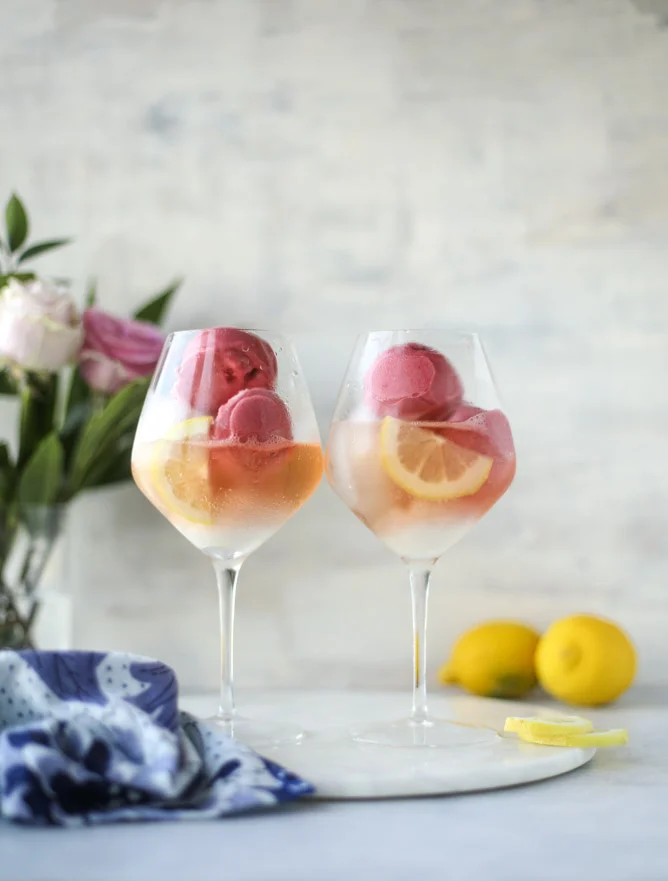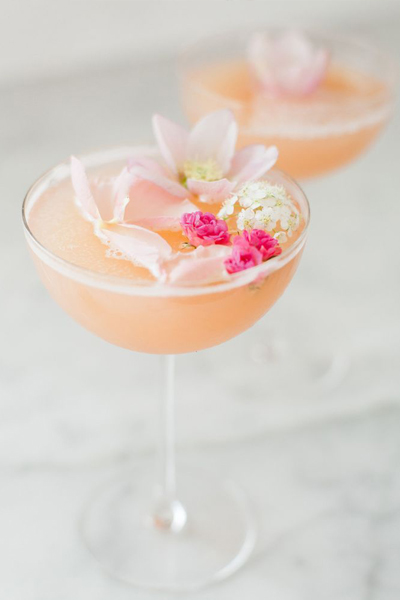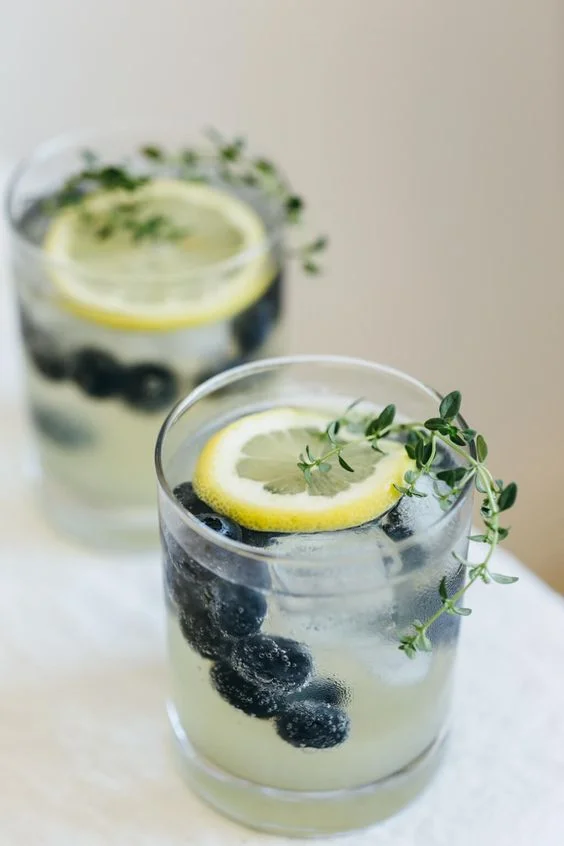Prosecco Guide | The Bellissimo Bottle of Bubbly!
This Summer, Team MAE had the pleasure of receiving an exchange student from the International English School. Laura Franceschini joined our team all the way from Valdobbiadene a town where Prosecco is produced in Italy. Over the past several weeks while living the Chicago city life, she has shared with us her love and knowledge of the sparkling wine that makes her hometown famous. Of course, we had to share this information with you, our beloved clients and readers!
THE HISTORY
You may be wondering some of the distinctive qualities of this wine, so we must first begin with a quick history behind Prosecco Superior, which happens to be one of the most exported wines in the world. This wine is traditionally produced in the northeastern corridor of Italy with its origins in the bucolic hills between Conegliano and Valdobbiadene. The first reference of this wine was in 1772 when the academic Francesco Maria Malvolti nominated it as a quality wine in the Giornale d’Italia, the local newspaper. The story of Prosecco grew in 1876 because the Oenology School was founded in Conegliano as the uniqueness of this wine was then pursued for study.
2009 was an important year for Prosecco as it reached a new level of finesse. Exceeding past Designation of Origin (DOC), the wine was able to become Controlled and Guaranteed Designation of Origin (DOCG). These regulations are essential to maintain the integrity of the product. Between the two cities of Conegliano and Valdobbiadene, there are 15 hillside municipalities and vineyards where you can find manually operated wineries instead of the DOC vineyards, which are farmed by machinery.
PLAYS ON PROSECCO
Now that you know a bit of the background, let’s chat about the different varietals of Prosecco Superior! Prosecco is made in three different formats: sparkling wine, semi-sparkling wine and still. Each type is characterized for a pale-straw color and a floral, fruity nose. Luckily, for this versatile wine varietal, Prosecco Superior is easily paired with all dishes. Starting with semi-sparkling, followed by still, and ending with a glass of sparkling wine, this wine is on a wide spectrum that can be the cherry on top of any meal!
Sparkling
The clear flagship of this wine is sparkling, as represented in Italian Spumante. Sparkling wine is typically produced in three categories: Brut, Extra Dry and Dry. You can also find Demi Sec and Doux. Each of these have a different quantity of residual sugar in the wine which makes them taste different.
Brut: The sparkling wine with the least quantity of sugar is Brut wine, which has traces of citrus and vegetal notes. Pair this wine with baked fish dishes to wow your guests at your next dinner party!
Extra Dry: Extra Dry wine is a more traditional version with a fruity nose of apple, pear or citrus. Try pairing this wine with vegetables, soups or a decadent pasta dish with meat sauces and fresh cheese.
Dry/Sec: The most underrated version is of this wine is Dry wine. Some notes behind this style are fruit, with elements of citrus, white peach and green apple. For the most nuance in flavors, try pairing this wine with spicy foods or complement with sweeter dishes.
Semi-Sparkling
The next version of Prosecco is semi-sparkling wine, which is the most informal and easiest to drink as an aperitif, a drink commonly served before a meal.
Still
Still Prosecco is a well-known option, more so in Italy, with a delicate straw-yellow color and a nose of apple, pear, almond and honey. The best way to enjoy this wine style is by pairing it with seafood, meat or vegetable starters.
In the vertex of the Prosecco pyramid there is Cartizze Superior, a sparkling wine, which is the cru of the DOCG’s area because it is produced only on a small hill slope zone of 106 hectares (approximately half a mile) of vineyards in Valdobbiadene between the locations of San Pietro di Barbozza, Santo Stefano and Saccol. It has a distinct nose of apricot, pear, apple, citrus fruit and rose with a intense color. This wine is perfect with traditional desserts such as pastries, fruit flans and even focaccia. It is an absolute treat if you are a Prosecco aficionado!
To note, the Prosecco Superior Conegliano Valdobbiadene is protected by two associations: Producers’ Association - Consorzio Tutela Prosecco Superiore DOCG – and the Association of Prosecco and Colli Conegliano Valdobbiadene Wine Road. The first association, Producers’ Association, is located in Pieve di Soligo. It was founded in 1962 and after some years it has received the identification from the Ministry of Agriculture as a organization to protect the Prosecco Conegliano Valdobbiadene. The latter, the Association of Wine Road, represents the oldest wine road in Italy originating in 1966 to link Conegliano and Valdobbiadene. The association works to promote the road and the vineyards through events, magazines and meetings. Geographically the wine road makes a ring, starting in Conegliano and arriving in Valdobbiadene in approximately 120 kilometers or 75 miles; it is very scenic winding through through vineyards, monuments and sightseeing stops. Between Conegliano and Valdobbiadene, every year, several events are planned (that our dear Laura is involved in organizing!). The first occasion every year is the Primavera del Prosecco Superiore, a Spring event beginning in March and finishing in June. Every town participates in an exhibition of Prosecco Superior where tourists and wine enthusiasts alike can taste different varietals. Other events during the summer include Canevando, a gastronomic tour through the wineries. There is also Calici di Stelle in August in each wine city, a tasting of local food and wine in some of the most beautiful wine hotspots in the region.
BUBBLY COCKTAILS
Prosecco Superior is not only positioned as a stand alone wine. It is widely used to create different combinations of cocktails; with the most famous in Venice being the Spritz. This is a perfect drink for an aperitif with a composition of Prosecco Superior, sparkling water or soda, Aperol or Campari and topped with a refreshing lemon or orange peel. Another famous cocktail is the Bellini made with Prosecco Superior, pressed pulp of white peach, arguably one of the most well-known in Italy. The origins of the Bellini have a fun history, this cocktail was first made by Giuseppe Cipriani, the owner of Harry’s Bar in Venice in 1947 to celebrate the art exhibition of Giovanni Bellini. In the last few years the cocktail of choice has become the Hugo, a cocktail made with Prosecco Superior, sparkling water, elderflower syrup and mint leaf. For more incredible prosecco cocktail ideas check out these articles from The Telegraph and Marie Claire.
Champagne vs Prosecco
When chatting Prosecco, inevitably we must discuss Champagne. At the heart of the matter is the most apparent difference - Location. Champagne was born in France, in the region of Champagne. Like Prosecco, it is a sparkling wine but the technical difference is the type of grape. Prosecco Superior is made with grapes of Glera whereas Champagne is produced with Chardonnay, Pinot Noir and Pinot Meunier.
The other slight differences are the calories and alcohol content or abv. Prosecco Superior tends to be slightly lighter than Champagne with 121 calories and 11% abv per glass. Champagne comes in closely at approximately 128 calories and 12% abv. One of the final details to note is the price. Champagne averages $40.00 US per bottle. The average cost of Prosecco Superior is between $12.00 and $15.00 US.
We hope that these tasting notes, history and details on Prosecco provide you with a bit more knowledge of the other bottle of bubbly. One that is often popped while celebrating your wedding or special event!
Ti Vogliamo Bene,
xo Laura Franceschini & Team Mae
To see how Michigan Avenue Events can help answer your wine questions, tasting menu pairings, and most importantly, assist in making your dream wedding or event come to life, please visit us at www.michiganavenueevents.com or call us at 312-585-7265.







